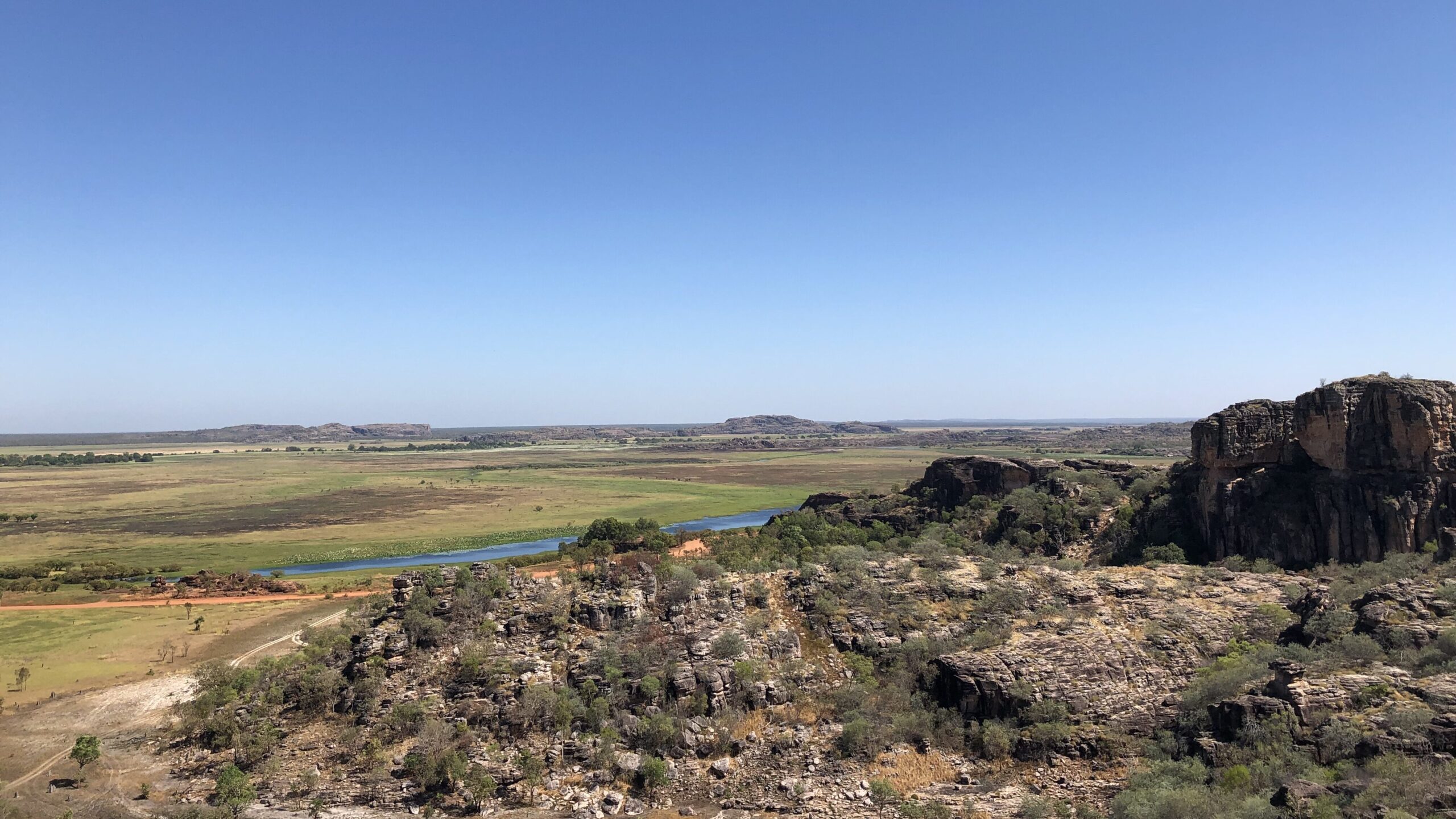Indigenous rock-art sites ‘chosen’ for vantage

The rock-art sites in Arnhem Land’s Red Lily Lagoon were ‘chosen’ for their critical vantage points, research from South Australia’s Flinders University has revealed.
The Flinders University research team, working in collaboration with Njanjma Rangers and Erre Traditional Owners, used aerial and drone surveys, subsurface imaging, and elevation data to model the lagoon’s environmental conditions 28–15,000 years ago, and discovered the floodplain floor was 7–15m lower than it is today. This indicates that environmental changes influenced the accessibility, visibility, and function of the sites over time.
“When archaeologists interpret rock art, they often assume the landscape hasn’t changed since the
art was first inscribed, which certainly isn’t the case at Red Lily Lagoon,” explains Ian Moffat, Associate Professor at Flinders University. “This landscape has changed dramatically from being on the coast, a swamp, woodlands and freshwater.”
“Modelling the changes in environmental conditions over time sheds new light on the locations, where they were in in these landscapes, how they were selected and used, and the roles they held in community and clan life.”


The research also identifies that during the period when the sea level was rising, after the ice age, rock art was preferentially made in areas with long distance views over open woodlands, says Flinders College of Humanities Research Associate Dr Jarrad Kowlessar.
“So we can suggest these views may have helped facilitate hunting, or even to more closely watch areas at a time when many people were being displaced by the rising water,” Dr Kowlessar says.
“Without doubt the research demonstrates rock art site locations were intentionally selected, with nuanced relationships to the local landscape, and there is potential to use our modelling into the future to tell us much more about the rich and significant archaeology of Arnhem Land.”
The research paper, ‘A Changing perspective: the impact of landscape evolution on rock art viewsheds’, has been published in the Archaeological and Anthropological Sciences journal.






